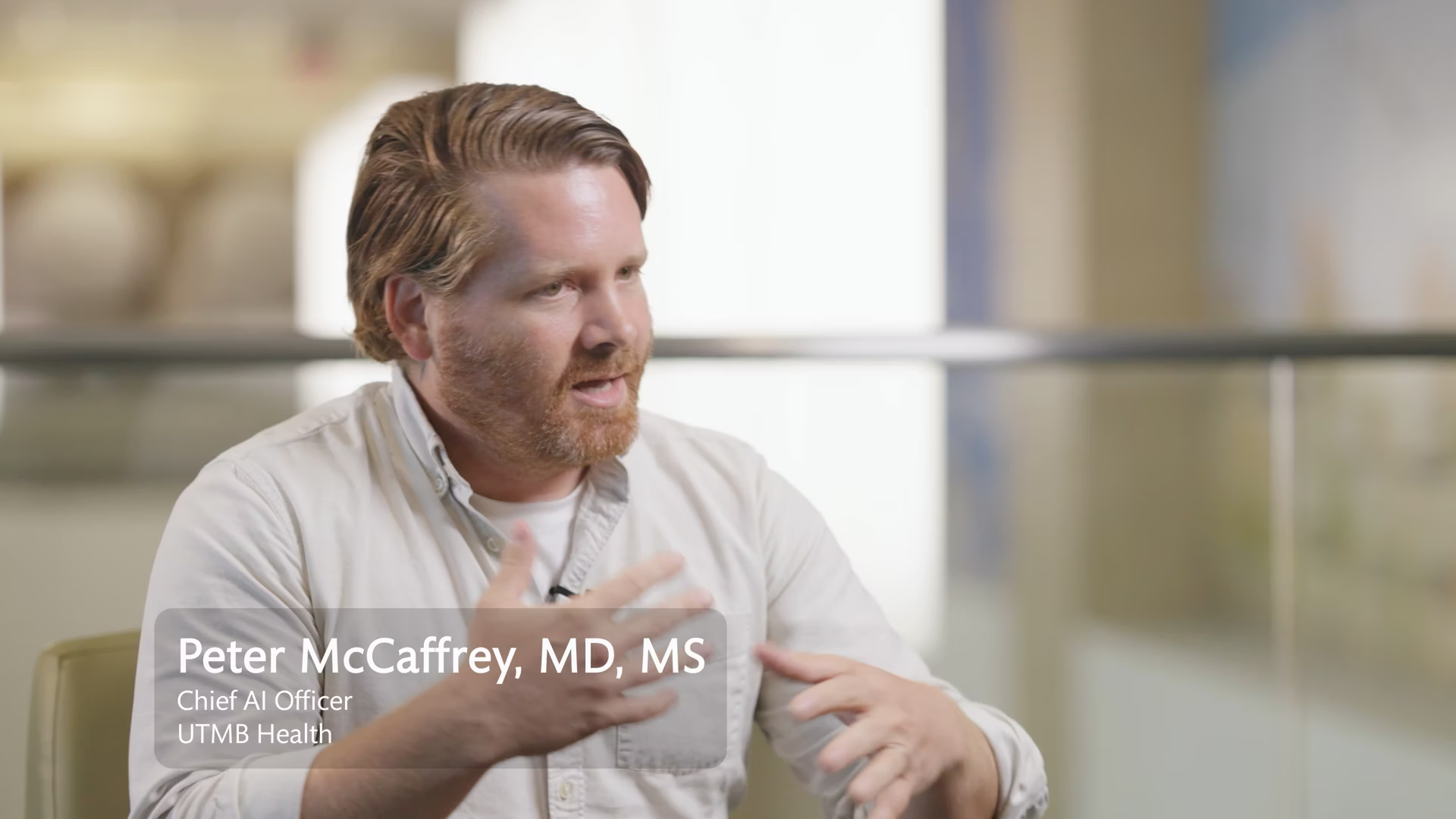
UTMB Health streamlines systemwide workflows and drives patient impact with Bunkerhill Carebricks
7+
11.7%
100%
Health System
Headquarters
Number of Beds
Number of Clinicians
The challenge
Like many health systems, UTMB Health knew it was missing opportunities to deliver better care — not because clinicians weren’t trying, but because key details were buried in complex, disparate data sources. They recognized that if they could apply AI to make full use of this data and take action on it, they could unlock new ways to improve outcomes, reduce inefficiencies, and scale best practices across the system.
The solution
UTMB Health adopted Bunkerhill’s Carebricks platform to unlock the full potential of their patient data and enable AI-powered action at scale. What began as a targeted solution for identifying and ensuring appropriate treatment for patients with cardiovascular risk quickly expanded into a systemwide strategy. The UTMB team saw early success and realized that Carebricks could be applied across all specialties to automate chart review, trigger next steps, drive efficiencies, and close care gaps without adding burden to clinical teams.
About UTMB Health
The University of Texas Medical Branch (UTMB Health) is a major academic medical center serving the Gulf Coast region. With four campuses and a network of hospitals and clinics, UTMB delivers high-quality care across a wide range of specialties.
UTMB Health has long been at the forefront of health innovation, investing in technologies that help clinicians do more with less. Their Chief AI Officer, Dr. Peter McCaffrey, has led efforts to bring AI into clinical workflows — not as a replacement for human judgment, but as a partner that makes sure no opportunity to help a patient goes unnoticed.
A look at their success
UTMB Health’s initial deployment focused on coronary artery calcium (CAC). Using Bunkerhill’s FDA-cleared algorithm, Carebricks automatically flagged patients with incidental CAC and initiated referrals to cardiology. Early results showed the system identified that 11.7% of patients getting routine chest CTs had unaddressed, clinically significant CAC and triggered follow-up. In just the first month of deployment, there were already examples of patients who would have otherwise been missed instead receiving life-saving surgeries.
But UTMB didn’t stop at CAC. Realizing that Carebricks could reason beyond chest CTs and across all patient data, they expanded rapidly into new domains. Today, workflows are live or in development for a wide range of actionable findings, including coronary calcium, aortic valve calcium, incidental pulmonary nodules, and liver steatosis, as well as a long list of additional use cases beyond actionable findings. These include referral queue triage, prior authorization automation, case mix optimization, and more — all designed to improve coordination and reduce friction across the care continuum.
“Many AI solutions are fragmented and narrowly scoped,” Dr. McCaffrey shares. “Turning on Bunkerhill felt like activating a shared brain that could finally think and act across our entire health system.” Backed by clinical champions in cardiology, radiology, pathology, and beyond, UTMB Health’s Carebricks deployment continues to grow. Even at this early stage, its impact is clear — patients are getting better care, faster, and care teams are doing it without adding extra work to their day.
